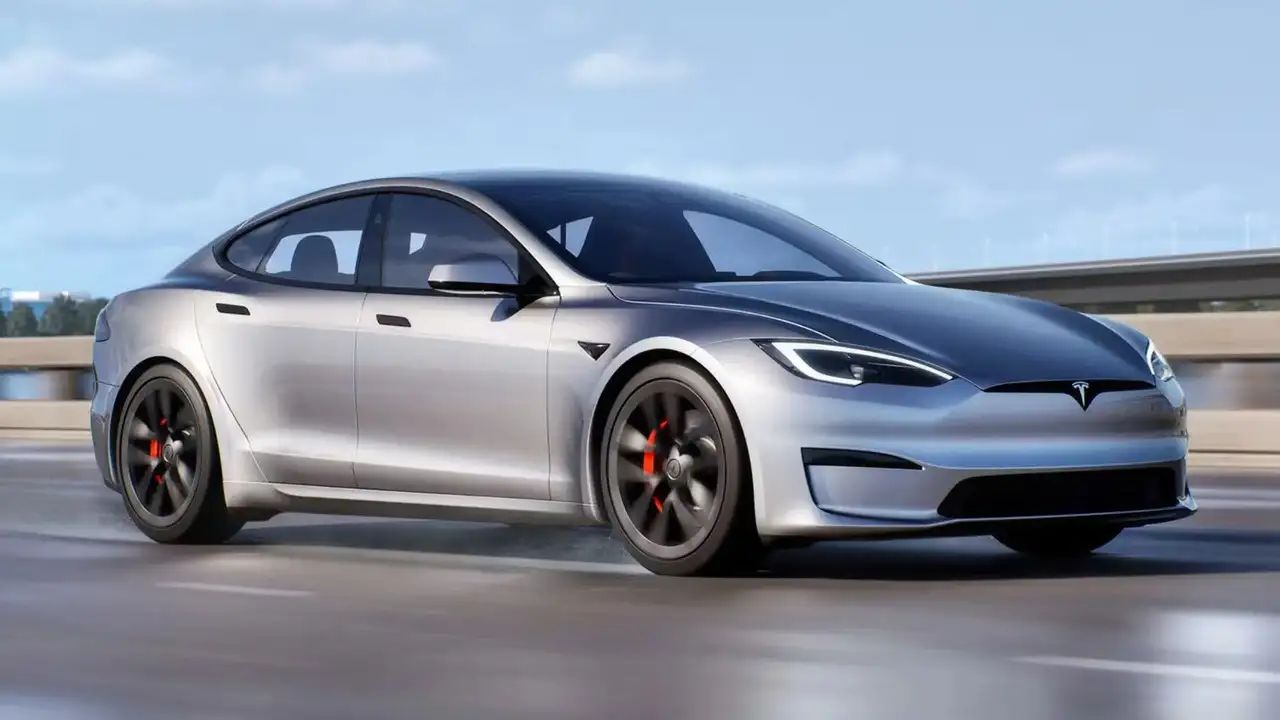
Purchasing a vehicle is often one of the most significant financial commitments an individual or business can make. However, the initial sticker price represents only a fraction of the total ownership cost. The true financial impact of a car extends far beyond its purchase, with ongoing maintenance and unforeseen repairs often leading to substantial, and sometimes surprising, expenditures over the vehicle’s lifespan. This reality can be particularly stark when considering premium vehicles or heavy-duty workhorses, where the allure of luxury or robust capability often masks a hidden financial burden.
While the prospect of owning a used premium vehicle—such as a BMW, Range Rover, or Mercedes-Benz SUV—at a fraction of its original Manufacturer’s Suggested Retail Price (MSRP) might seem appealing, it often leads to considerable long-term costs. Drivers frequently discover themselves spending thousands of dollars annually on maintenance and repairs, regardless of whether they have car payments. Our research indicates a clear trend: the older and more affordable a vehicle is to acquire, the more substantial the financial outlay required to keep it reliably on the road.
To provide consumers with clear, actionable insights, this comprehensive report leverages data compiled by CarEdge, focusing on the 20 most expensive cars to maintain over a 10-year period. Our methodology ranks each vehicle by its average total 10-year maintenance cost, providing a detailed breakdown of estimated annual expenses and the likelihood of needing a major repair. This fact-based analysis aims to equip you with critical information to make informed decisions, preventing common pitfalls. We have meticulously selected the 14 highest-ranking vehicles from this dataset to illuminate the models that statistically demand the most significant financial commitment for ongoing care, beginning with the top seven in this section.
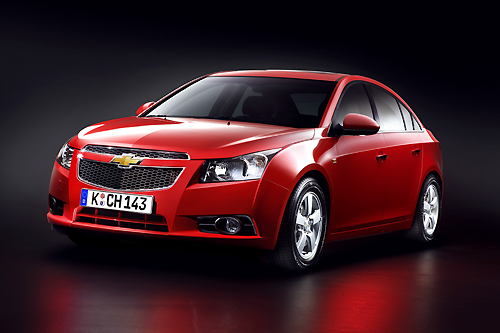
1. **Ram 2500-5500**Topping our list as the most expensive vehicle to maintain over a decade are the heavy-duty versions of the full-size Ram pickup truck, the 2500-5500 series. These formidable machines are renowned for their exceptional capability, engineered to tackle the most demanding towing and hauling jobs with robust performance. However, this impressive strength comes with an equally impressive financial commitment, making them the most expensive vehicles to keep on the road according to our data.
The 10-year maintenance cost for these heavy-duty Rams ranges from an staggering $25,134 to $25,844. Owners can expect annual costs to escalate dramatically over time, starting at approximately $778 in the first year but surging to nearly $4,889 by the tenth year. This significant increase underscores the growing demands and wear and tear that these hard-working vehicles experience throughout their operational life, often under rigorous conditions.
A particularly critical aspect of owning a Ram 2500-5500 is the exceptionally high likelihood of needing a major repair, which stands at an alarming 79.2% – the highest among all models ranked in this study. Such a high probability signifies that owners should anticipate substantial, unplanned repair expenses. These costs are frequently attributed to the specialized components and complex systems required for their heavy-duty applications, including diesel engine servicing, intricate transmission repairs, and the wear associated with robust suspension systems.
Maintaining these vehicles in optimal condition for their intended purpose—whether for commercial use or severe personal towing—requires not only specialized parts but also highly skilled labor. These factors collectively contribute to the elevated upkeep charges. While the Ram 2500-5500 trucks are undeniably powerful and durable workhorses, prospective and current owners must prepare for an ongoing financial investment that far exceeds that of typical vehicles, testing their budget significantly over the long term.
Read more about: Is Your Car a ‘Money Pit’? 12 Vehicles That Will Cost a Fortune to Fix
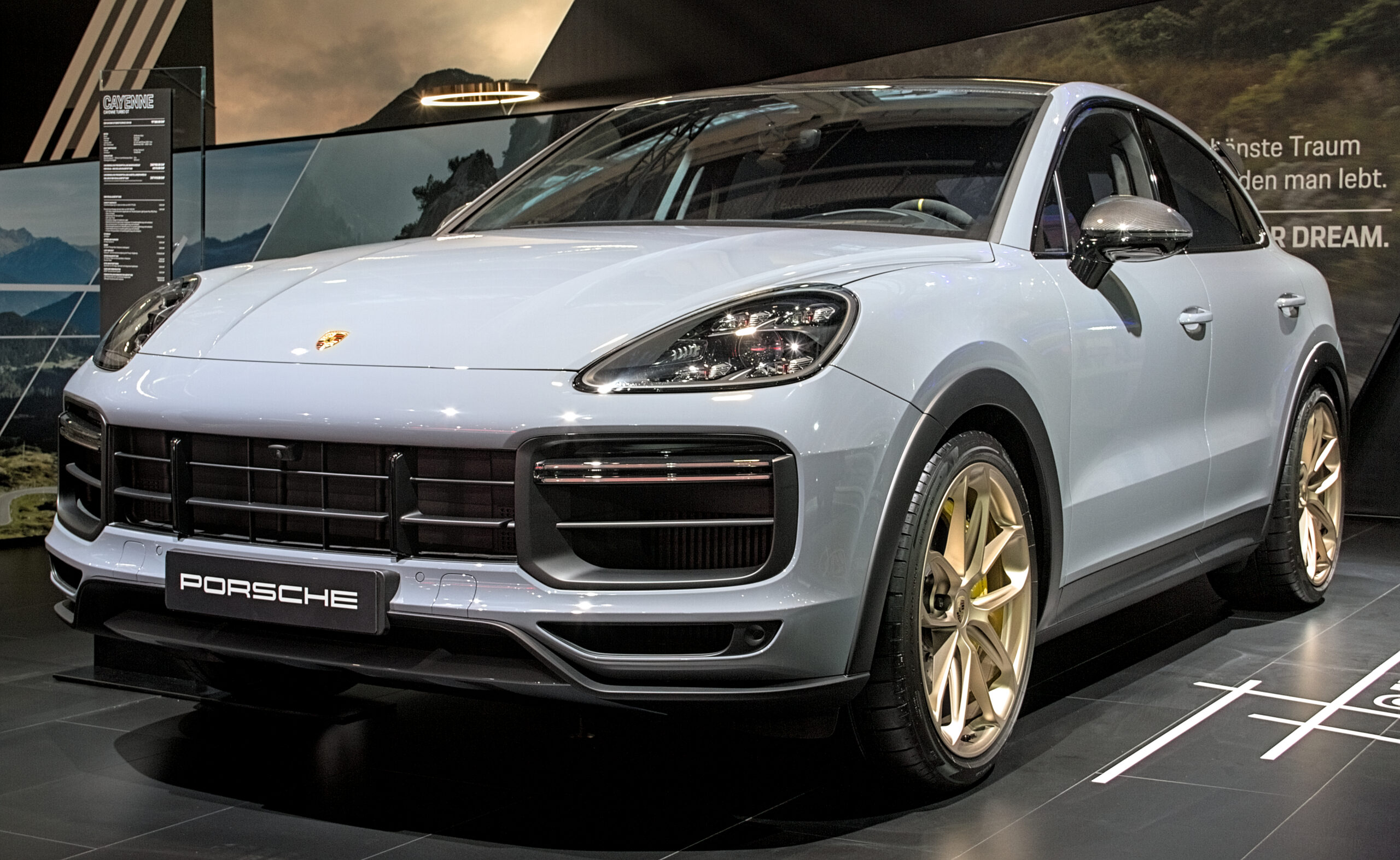
2. **Porsche Cayenne**The Porsche Cayenne, a mid-size SUV, commands the second position on our list of highest-maintenance vehicles, with a substantial 10-year total cost of $20,552. This model has firmly established its reputation as “the Porsche of SUVs,” offering powerful engine options and exceptionally tenacious handling that allows it to compete with many dedicated sports cars. However, as our data clearly indicates, owners will “pay dearly on an ongoing basis for those performance capabilities.”
Annual maintenance costs for the Cayenne demonstrate a marked escalation over time. Starting at approximately $721 in the first year, these expenses climb significantly to $3,827 by the tenth year of ownership. This trajectory highlights that the sophisticated engineering and high-performance components that define the Cayenne’s driving experience also necessitate a substantial and increasing budget for its upkeep. Furthermore, the likelihood of needing a major repair within ten years stands at 60.9%, indicating a considerable risk of significant, costly interventions.
The high maintenance costs associated with the Porsche Cayenne are a direct consequence of its premium performance credentials. Powerful engines, advanced suspension systems, and cutting-edge technology demand specialized parts and highly skilled technicians for servicing. Routine maintenance tasks, such as brake pad replacements or fluid changes, are inherently more expensive for a vehicle of this caliber due to the precision and quality of the components involved, designed to support its sports-car-like dynamics.
Moreover, the complex electronic systems and intricate mechanical designs typical of a luxury performance SUV can lead to higher repair bills when issues arise. These vehicles are not designed for budget-conscious ownership in the long term, and the ongoing investment is a necessary aspect of enjoying their exhilarating performance and luxurious comfort. Prospective owners should factor these considerable ongoing costs into their financial planning to avoid unexpected strain.
Car Model Information: 2016 Porsche Cayenne Turbo S
Name: Porsche Cayenne
Manufacturer: Porsche
Production: August 2002–present
ModelYears: 2003–present
Class: crossover SUV
Layout: Front-engine, four-wheel-drive
Categories: 2010s cars, 2020s cars, All-wheel-drive vehicles, All articles needing additional references, All articles with dead external links
Summary: The Porsche Cayenne is a series of automobiles manufactured by the German company Porsche since 2002. It is a luxury crossover SUV, and has been described as both a full-sized and a mid-sized vehicle. The first generation was known within Porsche as the Type 9PA (955/957) or E1. It was the first V8-engined vehicle built by Porsche since 1995, when the Porsche 928 was discontinued. It is also Porsche’s first off-road variant vehicle since its Super and Junior tractors of the 1950s, as well as the first production Porsche with four doors. Since 2014, the Cayenne has been sold alongside a smaller Porsche SUV, the Macan.
The second-generation Cayenne (Type 92A or E2) was unveiled at the 2010 Geneva Motor Show in March. The Cayenne shares its platform, body frame, doors, and electronics with the Volkswagen Touareg and Audi Q7. It received a facelift in 2014 with minor external changes, and introduced a new plug-in E-Hybrid version with its public launch at the Paris Motor Show. Since 2008, all engines have featured direct injection technology. The third generation (Type 9YA or E3) was unveiled in 2017 in the German city of Stuttgart.
Get more information about: Porsche Cayenne
Buying a high-performing used car >>>
Brand: Porsche Model: Cayenne
Price: $42,537 Mileage: 81,796 mi.
Read more about: The Engineering Paradox: Why Porsche is Rethinking “Fake” Gear Shifts for its Next-Gen EVs, from Skepticism to Sophisticated Simulation
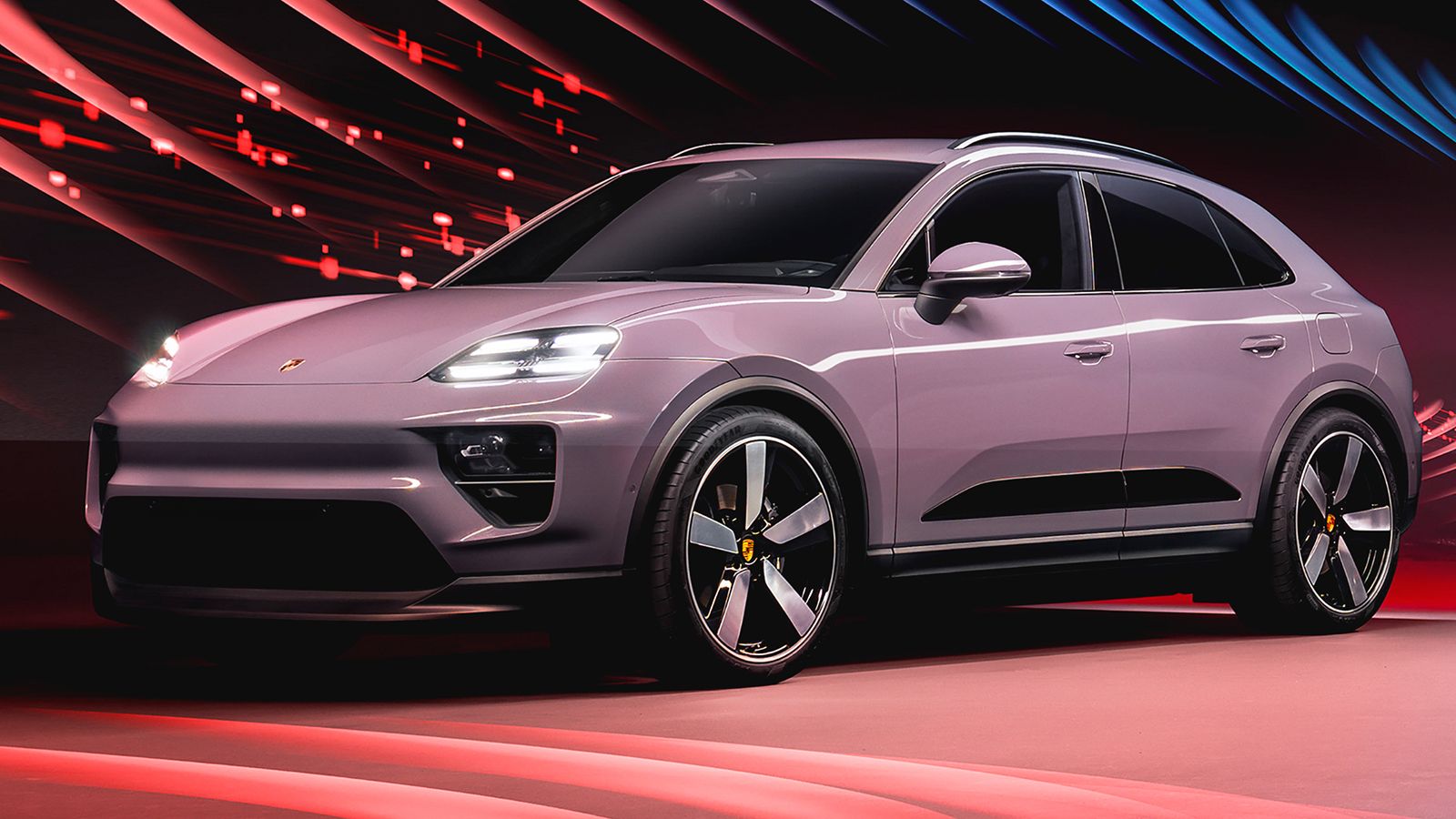
3. **Porsche Macan**Following closely behind its larger sibling, the compact Porsche Macan secures the third spot on our list, with a projected 10-year maintenance cost of $20,137. The Macan is recognized for being “no slouch in the performance category,” delivering a driving experience that aligns with Porsche’s sporting heritage despite its SUV classification. However, much like the Cayenne, it proves “expensive to repair and maintain, costing more than Porsche’s actual sports cars,” as noted in our context.
An analysis of the annual costs reveals a consistent upward trend for the Macan. Owners can expect to spend around $679 in the first year, with this figure rising sharply to $3,786 by the tenth year. This escalation underscores the continuous financial demand of owning a high-performance luxury vehicle. The probability of encountering a major repair over the decade is also substantial, at 60.9%, mirroring the Cayenne’s figure and indicating a similar level of long-term risk for significant expenditures.
The elevated maintenance expenses for the Porsche Macan stem from its precision engineering and high-performance components. Its powerful engine options, refined chassis, and sophisticated electronic systems require specialized servicing and authentic Porsche parts, which are premium-priced. Even routine service for a compact SUV like the Macan involves costs more akin to a sports car, a direct reflection of the brand’s commitment to performance and luxury.
Furthermore, potential issues with advanced systems or specialized mechanical parts can lead to unexpectedly high repair bills. The Macan, while offering an engaging and dynamic driving experience, demands a significant ongoing investment to uphold its performance standards and luxurious feel. Consumers considering this model should be fully aware of the long-term financial commitment required to maintain its distinguished capabilities.
Car Model Information: 2021 Porsche Macan S
Name: Porsche Macan
Manufacturer: Porsche AG
Production: February 2014 – present
ModelYears: 2015–present
Class: Compact luxury crossover SUV
BodyStyle: SUV
Caption: 2024 Porsche Macan
Categories: All-wheel-drive vehicles, All articles with unsourced statements, Articles with short description, Articles with unsourced statements from November 2016, CS1 German-language sources (de)
Summary: The Porsche Macan is a compact luxury crossover SUV (D-segment) produced by German manufacturer Porsche since 2014. It is the smaller SUV from Porsche below the Cayenne. The first-generation Macan went on production from February 2014 with petrol and diesel engine options. In 2024, Porsche released the second-generation Macan which is a battery electric vehicle built on the dedicated Premium Platform Electric (PPE) EV platform. The first-generation and second-generation Macan will be sold side-by-side, providing multiple powertrain options for consumers.
Since 2015, its first full year in the market, the Macan has been the best-selling Porsche model globally ahead of the larger Cayenne.
Get more information about: Porsche Macan
Buying a high-performing used car >>>
Brand: Porsche Model: Macan
Price: $45,392 Mileage: 39,704 mi.
Read more about: The Engineering Paradox: Why Porsche is Rethinking “Fake” Gear Shifts for its Next-Gen EVs, from Skepticism to Sophisticated Simulation

4. **Ram ProMaster City/Cargo Van**The Ram ProMaster City and Cargo Van models, versatile workhorses designed primarily for small businesses operating in urban areas, rank fourth on our list of high-maintenance vehicles. Despite their utility and adaptability, these vans come with a substantial long-term financial commitment, with estimated 10-year maintenance costs ranging from $19,870 to $20,061. This places them squarely in a category that, as the context states, “will test the bottom line with their high upkeep costs.”
From a financial perspective, the annual costs for these commercial vans exhibit a significant increase over time. Starting at approximately $621 in the initial year, these expenses climb to $3,845 by the tenth year of ownership. This upward trajectory reflects the inherent demands placed on commercial vehicles, which are often subjected to heavier use, frequent stops, and diverse cargo loads, accelerating wear and tear on critical components.
The likelihood of requiring a major repair for the Ram ProMaster City/Cargo Van is also notably high at 63.2%. This statistic highlights a considerable risk for unexpected and potentially costly repairs, which can be particularly impactful for small businesses relying on these vehicles for daily operations. Downtime due to maintenance or repairs directly affects productivity and profitability, making these costs a critical consideration.
Specific issues contributing to these high upkeep costs often include components related to the powertrain and suspension, which bear the brunt of commercial duties. The need for durable, robust parts and specialized servicing to ensure reliability further elevates expenses. While these vans offer excellent functionality for their intended purpose, prospective buyers, especially business owners, must budget for a substantial and increasing maintenance outlay to keep them running efficiently and mitigate the risk to their operational bottom line.
Car Model Information: 2017 Mazda Mazda3 Sport
Name: Fiat Doblò
Manufacturer: Fiat,Tofaş,Stellantis
Production: 2000–present
Class: Panel van
Predecessor: Fiat Fiorino,Fiat Marengo,Chrysler minivans (RT)
Categories: 2000s cars, 2010s cars, All-wheel-drive vehicles, All articles containing potentially dated statements, All articles with dead external links
Summary: The Fiat Doblò is a panel van and leisure activity vehicle produced by Italian automaker Fiat since 2000. It was unveiled at the Paris Motor Show in October 2000. A second-generation Doblò succeeded the original vehicle in 2010 for most markets, and it was sold in the United States as the RAM ProMaster City from 2015 to 2022. The second generation was also sold in Europe and the UK as the Opel/Vauxhall Combo. The third-generation Doblò, a rebadged version of the Citroën Berlingo, was unveiled in June 2022, and is also sold as the Opel or Vauxhall Combo, Peugeot Partner, and Toyota ProAce.
Get more information about: Fiat Doblò
Buying a high-performing used car >>>
Brand: Ram Model: ProMaster City/Cargo Van
Price: $13,857 Mileage: 76,933 mi.
Read more about: Is Your Car a ‘Money Pit’? 12 Vehicles That Will Cost a Fortune to Fix
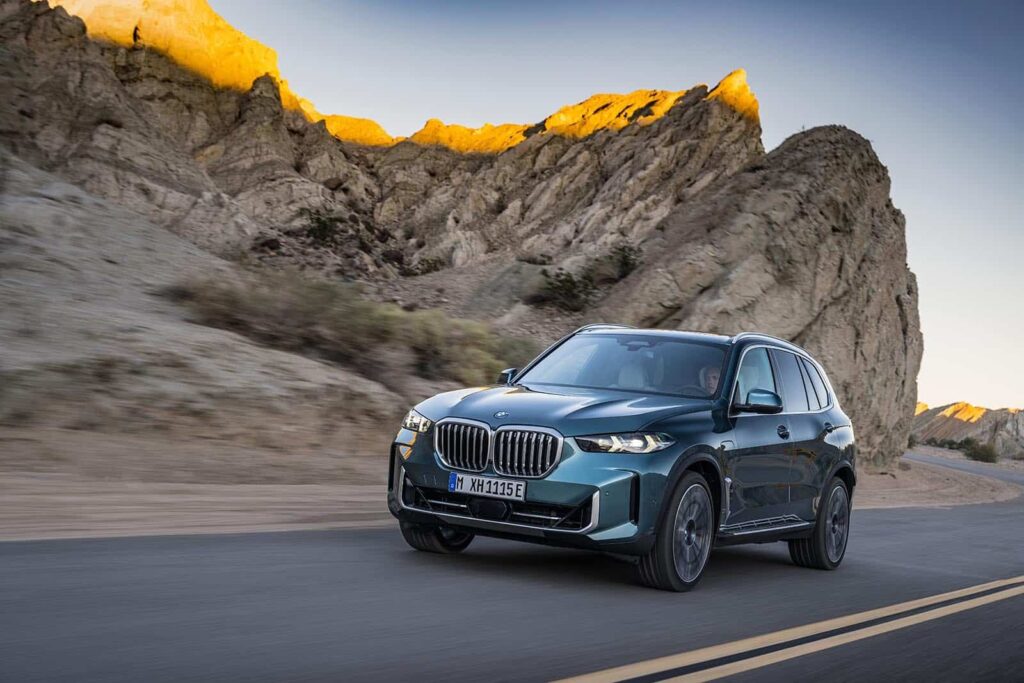
5. **BMW X6 M**Securing the fifth position for high maintenance costs is the BMW X6 M, the highest-performance version of the mid-size BMW X6 SUV. This particular model carries an estimated 10-year maintenance cost of $18,900, indicating a significant ongoing financial commitment for its owners. The X6 M is distinguished by its aggressive, “sharply sloped coupe-like roofline” compared to the X5, a design choice that prioritizes a sportier profile, even if it “sacrifices a bit of rear headroom and cargo space.”
Annual maintenance costs for the BMW X6 M begin at a notable $693 in the first year, steadily escalating to approximately $3,479 by the tenth year of ownership. This financial progression is a clear indicator of the specialized care and premium components required for a vehicle engineered for extreme performance. Furthermore, owners face a 54.6% chance of needing a major repair over the decade, a figure consistent with many high-performance luxury European vehicles.
The substantial costs associated with maintaining the X6 M are intrinsically linked to its ‘M’ designation, signifying BMW’s top-tier performance engineering. This includes highly tuned engines, advanced M-specific suspension systems, high-performance braking components, and sophisticated electronic management systems. Each of these elements demands specialized, often more expensive, parts and expert labor for both routine servicing and any necessary repairs.
Beyond the performance-critical components, the X6 M’s luxury features and complex infotainment systems can also contribute to higher repair bills. While its sporty profile and exhilarating driving dynamics are a major draw, prospective owners must be prepared for the reality that the performance and prestige of an M model translate directly into a premium price for its long-term upkeep and reliability. Budgeting for these elevated expenses is crucial for enjoying the full potential of this luxury performance SUV without financial surprises.
Car Model Information: 2017 Mazda Mazda3 Sport
Name: BMW X6
Caption: BMW X6 (F16)
Manufacturer: BMW
Production: December 2007 – present
ModelYears: 2008–present
Class: Executive car,crossover SUV
BodyStyle: coupé SUV
Layout: Front-engine, four-wheel-drive
Related: BMW X5
Categories: 2000s cars, 2010s cars, 2020s cars, All-wheel-drive vehicles, All articles with dead external links
Summary: The BMW X6 is a mid-size luxury crossover SUV by German automaker BMW. The BMW X6 is the originator of the sports activity coupé (SAC), referencing its sloping rear roof design. It combines the attributes of an SUV (high ground clearance, all-wheel drive and all-weather ability, large wheels and tires) with the stance of a coupé (styling featuring a sloping roof). It is built in BMW’s North American plant in Greer, South Carolina alongside the BMW X5, whose platform it shares. Prior to the release of the X7, the X6 was considered a flagship SUV for BMW.
The first generation (E71) was released for sale in April 2008 for the 2008 model year, while the second-generation X6 (F16) was launched at the Paris Motor Show in 2014. The third-generation X6 was revealed in July 2019.
Get more information about: BMW X6
Buying a high-performing used car >>>
Brand: BMW Model: X6 M
Price: $13,857 Mileage: 76,933 mi.
Read more about: Beyond the Badges: 10 Revolutionary 1960s Sports Cars Only True Collectors Will Recognize
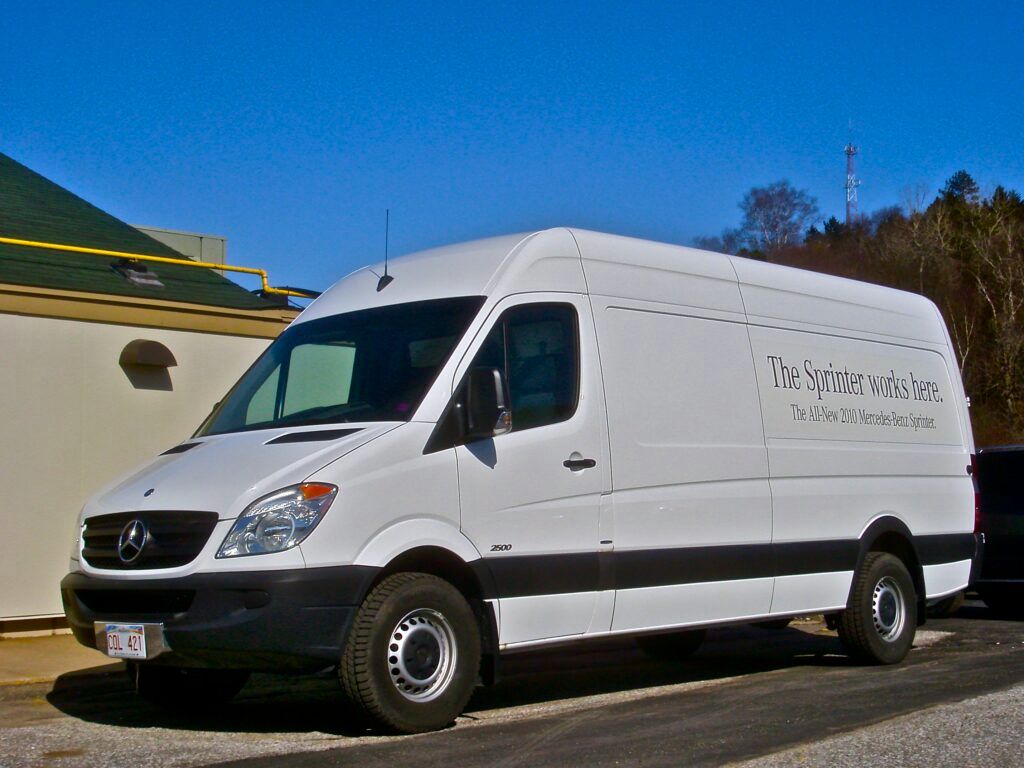
6. **Mercedes-Benz Sprinter Van**The Mercedes-Benz Sprinter Van, a prominent figure in the large commercial van segment, takes the sixth spot on our list of vehicles with high long-term maintenance costs. Our data shows an estimated 10-year maintenance cost of $18,634 for this versatile vehicle. Renowned as the “Mercedes-Benz of large commercial vans,” it is available in various sizes and roof lengths, designed to “accommodate most business needs.” However, this premium brand cachet, as noted in the context, “takes its toll in higher maintenance and repair charges.”
An examination of annual maintenance expenditures for the Sprinter reveals a steady increase over time. Starting at approximately $621 in the first year, the costs rise significantly to $3,513 by the tenth year of operation. This upward trend is indicative of the continuous investment required to maintain a commercial vehicle under potentially demanding usage scenarios. The likelihood of a major repair within the ten-year period is also considerable, standing at 56.7%, underscoring the potential for significant unplanned expenses.
High maintenance costs for the Mercedes-Benz Sprinter are a confluence of factors, including its luxury branding and its role as a commercial work vehicle. Mercedes-Benz components, even for commercial applications, typically carry a higher price point than those from non-premium brands. Furthermore, the specialized engineering required for its robust chassis, sophisticated engines, and advanced driver-assist systems contributes to more expensive parts and labor for servicing.
For businesses relying on the Sprinter, these elevated costs are a critical operational consideration. The need for precise, manufacturer-approved servicing to ensure reliability and minimize downtime adds to the financial burden. While the Sprinter offers unparalleled versatility and comfort in its segment, its premium heritage means owners must budget for ongoing maintenance and repair costs that reflect its sophisticated design and brand standing.
Car Model Information: 2017 Mazda Mazda3 Sport
Name: Mercedes-Benz Sprinter
Caption: Mercedes-Benz Sprinter (Third generation)
Manufacturer: ubl
Aka: Freightliner Sprinter (2001–2021),Dodge Sprinter (2003–2009),Volkswagen Crafter (2006–2017)
Production: 1995–present
ModelYears: 1995–present (Europe) , 2002–present (North America)
Assembly: Düsseldorf,Tiaret,Nizhny Novgorod
Class: Light commercial vehicle,Full-size van
BodyStyle: vehicle door,pickup truck,crew van,minibus
Related: Volkswagen Crafter,Volkswagen Transporter LT
Successor: Fiat Ducato#Ram ProMaster
Layout: FF layout,FR layout,F4 layout
Sp: uk
Predecessor: Mercedes-Benz TN,Dodge Ram Van,Mercedes-Benz Vario
Categories: 1990s cars, 2000s cars, 2010s cars, All articles needing additional references, All articles with unsourced statements
Summary: The Mercedes-Benz Sprinter is a light commercial vehicle (van) built by Mercedes-Benz Group AG of Stuttgart, Germany as a large van, chassis cab, minibus, and pickup truck. In the past, the Sprinter had been sold under the Mercedes-Benz, Dodge, and Freightliner nameplates. In the U.S., it was built from complete knock down (CKD) kits by Freightliner. Re-badged and re-engined Sprinters were also sold by Volkswagen Commercial Vehicles as the Volkswagen LT and the Volkswagen Crafter. They are now primarily marketed by Mercedes-Benz.
In the Mercedes-Benz van lineup, the Sprinter is the largest model offered, followed by the mid-size Vito (aka Viano, V-Class, and EQV) and small Citan.
Get more information about: Mercedes-Benz Sprinter
Buying a high-performing used car >>>
Brand: Mercedes-Benz Model: Sprinter Van
Price: $13,857 Mileage: 76,933 mi.
Read more about: The Ultimate Guide to Affordable Classic Cars: 14 Reliable Rides That Won’t Break the Bank (and Are Surprisingly Easy to Own!)
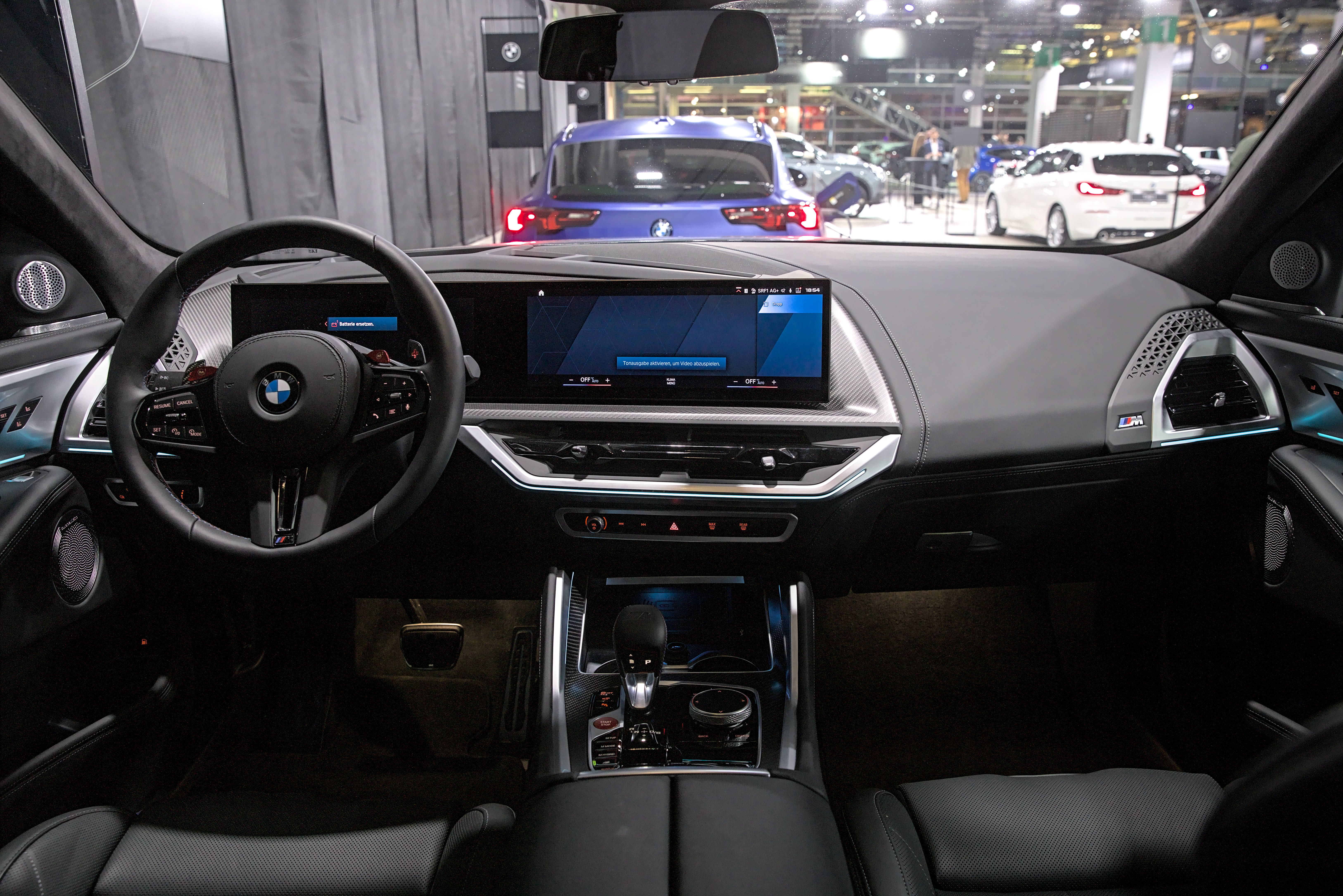
7. **BMW X7**Rounding out the first half of our analysis, the BMW X7, recognized as the brand’s largest and most luxurious SUV, is ranked seventh for its high maintenance costs, with a 10-year total estimated at $18,550. Despite being described as “not especially flashy,” the X7 offers three rows of seating and maintains a reasonably sporty demeanor, powered by a choice of turbocharged V6 and V8 engines. This combination of luxury, size, and performance invariably translates into significant long-term upkeep expenses.
Breaking down the annual costs, owners can anticipate spending around $658 in the first year, with this figure climbing progressively to $3,444 by the tenth year. This trajectory reflects the escalating demands of maintaining a sophisticated, large luxury SUV as it ages. The probability of experiencing a major repair within the first decade of ownership is 54.6%, aligning with other premium European vehicles on this list and indicating a notable risk for substantial repair bills.
The high maintenance costs for the BMW X7 are a direct consequence of its complex engineering, advanced technology, and luxurious appointments. Its powerful turbocharged engines, multi-zone climate control systems, advanced driver-assistance features, and intricate suspension components all require specialized parts and highly skilled labor for servicing. The sheer size of the vehicle also means larger components, which often come with a higher price tag for replacement.
Maintaining the X7’s blend of comfort, capability, and performance demands a proactive and well-funded approach to vehicle care. Consumers attracted to its spacious interior, luxurious features, and dynamic driving characteristics must be prepared for an ongoing financial commitment that supports its sophisticated design and ensures its long-term reliability. Without adequate budgeting, the costs of keeping this flagship SUV on the road can quickly become a significant financial challenge.
Car Model Information: 2024 BMW X7 xDrive40i
Name: BMW X7
Manufacturer: BMW
ModelCode: G07
Production: December 2018 – present
ModelYears: 2019–present
Assembly: ubl
Class: Full-size,luxury car,crossover SUV
BodyStyle: SUV
Layout: Front-engine, four-wheel-drive layout
Platform: BMW CLAR platform
Related: unbulleted list
Engine: unbulleted list
Transmission: ZF 8HP transmission,automatic transmission#Hydraulic automatic transmissions
Wheelbase: 3105 mm
Abbr: on
Length: convert
Width: 2000 mm
Height: convert
Weight: convert
Designer: Julien Sarreméjean,Anders Thøgersen (facelift)
Drivetrain: MHEV
Categories: 2020s cars, All-wheel-drive vehicles, All articles with dead external links, Articles with dead external links from July 2025, Articles with permanently dead external links
Summary: The BMW X7 is a full-size luxury crossover sport utility vehicle manufactured by BMW. It is BMW’s largest and second most expensive SUV in its line-up, and is considered a flagship SUV for the brand.
The X7 was first announced by BMW in March 2014. It was officially unveiled on October 17, 2018, with pre-orders being taken online. The X7 has been available at dealers since March 2019.
Get more information about: BMW X7
Buying a high-performing used car >>>
Brand: BMW Model: X7
Price: $67,525 Mileage: 36,153 mi.
Read more about: Beyond the Badges: 10 Revolutionary 1960s Sports Cars Only True Collectors Will Recognize

8. **BMW X5**The BMW X5 holds the eighth position on our comprehensive list of high-maintenance vehicles, projecting an estimated 10-year maintenance cost of $18,389. This mid-size luxury SUV is a well-rounded option, comfortably positioned between the more compact X3 and the expansive seven-passenger X7. It delivers commendable performance, courtesy of its turbocharged 3.0-liter six-cylinder engine, coupled with a standard of comfort that appeals to many luxury SUV buyers, making it a highly rated choice in its segment.
However, this blend of performance and luxury also means a significant ongoing financial commitment. Owners can anticipate annual maintenance expenses to start at approximately $642 in the first year, steadily climbing to a substantial $3,428 by the tenth year of ownership. This upward trend highlights the escalating demands of maintaining a sophisticated luxury vehicle as it ages, emphasizing the need for consistent budgeting.
Moreover, the likelihood of needing a major repair within a decade stands at 54.6%, a figure consistent with many high-performance European luxury vehicles. Such a probability indicates that owners should factor in potential substantial, unplanned repair expenses. These costs often stem from the X5’s complex engineering, which includes advanced electronic systems, precision suspension components, and the inherent intricacies of its powerful powertrain, all requiring specialized parts and expert labor for servicing.
CarEdge data underscores that while the BMW X5 offers a top-tier luxury and performance experience, keeping it reliably road-ready comes at a premium. Potential issues range from transmission troubles and finicky electronics to pricey suspension repairs, all contributing to its ranking among the most expensive SUVs to maintain. Consumers considering this popular model should be fully aware of these long-term financial implications to ensure the joy of ownership isn’t overshadowed by unexpected maintenance burdens.
To mitigate these potential costs, prospective owners should diligently adhere to the recommended service schedule and consider extended warranty options, especially if planning for long-term ownership. Understanding these realities upfront allows for better financial preparedness and a more satisfying overall experience with this otherwise impressive luxury SUV.
Car Model Information: 2022 BMW X5 M50i
Name: BMW X5
Manufacturer: BMW
Class: Mid-size,luxury vehicle,crossover SUV
BodyStyle: SUV
Production: 1999–present
Layout: Front-engine, four-wheel-drive layout,Front-engine, rear-wheel-drive layout
Categories: 2000s cars, 2010s cars, All-wheel-drive vehicles, All articles with unsourced statements, Articles with short description
Summary: The BMW X5 is a mid-size luxury crossover SUV produced by BMW. The X5 made its debut in 1999 as the E53 model. It was BMW’s first SUV. At launch, it featured all-wheel drive and was available with either a manual or automatic gearbox. The second generation was launched in 2006, and was known internally as the E70. The E70 featured the torque-split capable xDrive all-wheel drive system mated to an automatic gearbox. In 2009, the X5 M performance variant was released as a 2010 model.
BMW marketed the X5 officially as a “Sports Activity Vehicle” (SAV), rather than an SUV, to indicate its on-road handling capability despite its large dimensions. The X5 signaled a shift away from the utilisation of body-on-frame construction, in favour of more modern monocoque chassis construction. Although the Mercedes-Benz M-Class was introduced more than a year prior to the X5, the X5 was the first to utilise a monocoque chassis. The M-Class used body-on-frame construction until its second generation.
The X5 is primarily manufactured in North America, at BMW Group Plant Spartanburg. Assembly operations also took place in Russia by Avtotor until February 2022, along with operations in India, Indonesia, Malaysia, and Thailand. The X5 is also modified for armoured security versions, at the BMW de México Toluca plant.
The automaker’s SAV series, which was started by the X5, has expanded with derivations of other number-series BMWs. This began in 2003 with the X3, and continued in 2008 with the X6 (which shares its platform with the X5).
Get more information about: BMW X5
Buying a high-performing used car >>>
Brand: BMW Model: X5
Price: $55,855 Mileage: 21,135 mi.
Read more about: Driving Expert’s Clever Hacks: Mastering Safe Backing and Crowded Area Navigation to Eliminate Guesswork
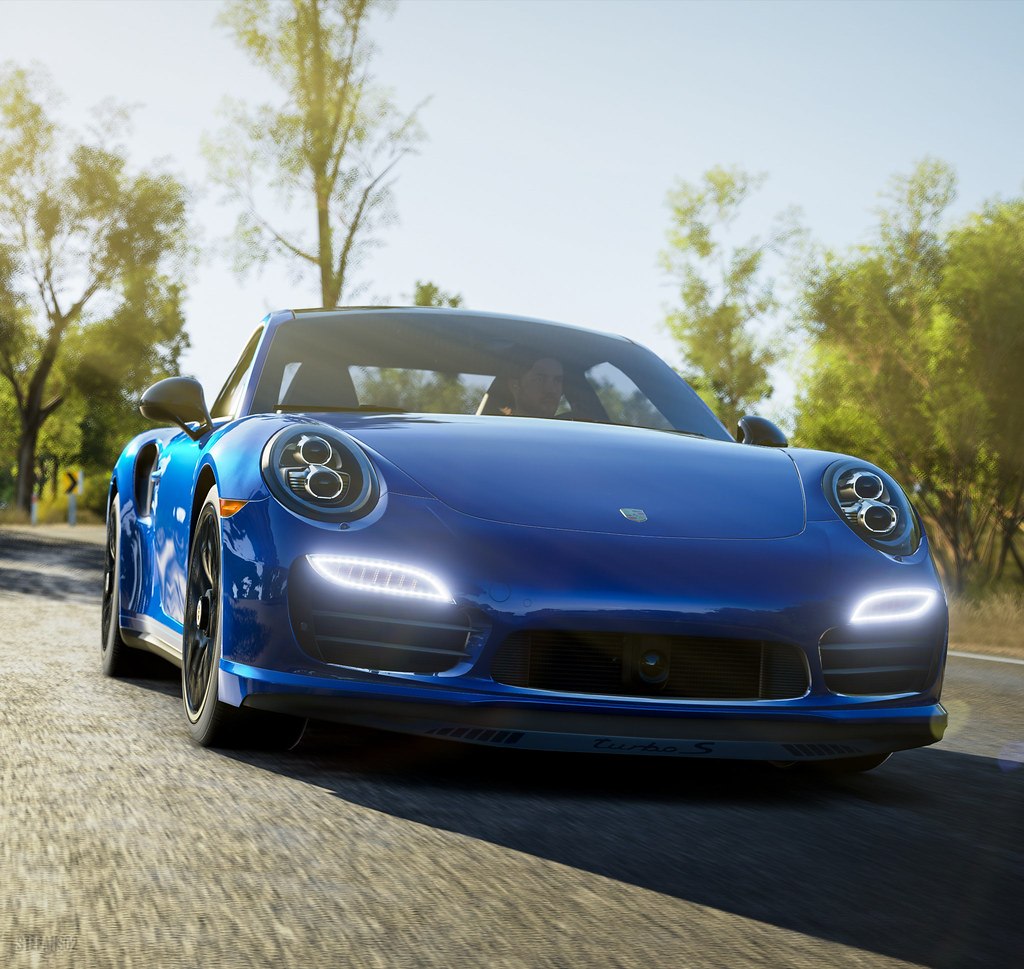
9. **Porsche 911**For many enthusiasts, the Porsche 911 represents the pinnacle of sports car engineering, an iconic vehicle renowned for its exceptional performance and driving dynamics. Yet, this exhilaration comes with a notable financial caveat, placing the 911 ninth on our list with an estimated 10-year maintenance cost of $18,231. It is, unequivocally, one of the best all-around sports cars available, offering a variety of configurations that cater to diverse driving preferences.
Analyzing the annual costs reveals a significant financial commitment. In the first year of ownership, expenses are approximately $780, escalating to $3,208 by the tenth year. This upward trajectory for maintenance costs highlights that the longer you own this revered machine, the more substantial the financial outlay required to keep it performing at its legendary standards. It’s a clear illustration that the ongoing cost for these performance capabilities is considerable.
Owners also face a 47.6% chance of needing a major repair within ten years. While slightly lower than some luxury SUVs on this list, it still represents a notable risk for significant, costly interventions. The inherent complexity of a high-performance sports car, with its advanced engine, sophisticated transmission, and specialized chassis components, demands particular attention during servicing.
As the context notes, “Owning a Porsche 911 is more than the thrill; it’s also about the bill.” The steep maintenance costs are primarily attributed to the high-performance parts, which demand specialized care and come with premium price tags. Routine services like brake pad replacements, which are crucial for a car designed for speed, and even basic oil changes, are inherently more expensive due to the precision and quality of components required to uphold Porsche’s engineering standards.
Prospective 911 owners must embrace the reality that this dream machine requires a dedicated budget for its upkeep. The investment isn’t just in the purchase but in the sustained care necessary to enjoy its unrivaled performance and maintain its value. Careful financial planning is essential to ensure that the thrill of the drive remains the primary focus, rather than the surprise of the repair bill.
Car Model Information: 2022 Porsche 911
Name: Porsche 911
Caption: The 1 millionth 911 produced on display at Volkswagen Group Forum, Berlin
Designer: Ferdinand Alexander Porsche
Manufacturer: Porsche
Production: September 1964 – present
Assembly: Stuttgart,Baden-Württemberg
Class: Sports car
BodyStyle: unbulleted list
Related: unbulleted list
Layout: Rear-engine design,rear-wheel drive
Predecessor: Porsche 356
Categories: 1970s cars, 1980s cars, 1990s cars, 2+2 coupés, 2000s cars
Summary: The Porsche 911 model series (pronounced Nine Eleven or in German: Neunelf) is a family of German two-door, high performance rear-engine sports cars, introduced in September 1964 by Porsche AG of Stuttgart, Germany. Now in its eighth generation, all 911s have a rear-mounted flat-six engine, and usually 2+2 seating, except for special 2-seater variants. Originally, 911s had air-cooled engines, and torsion bar suspension, but the 911 has been continuously enhanced, and evolved across generations. Though the 911 core concept has remained largely unchanged, water-cooled engines were introduced with the 996 series in 1998, and front and rear suspension have been replaced by Porsche-specific MacPherson suspension up front, and independent multi-link rear suspension.
The 911 has been raced extensively by private and factory teams, in a variety of classes. It is among the most successful competition cars. In the mid-1970s, the naturally aspirated 911 Carrera RSR won world championship races including Targa Florio and the 24 Hours of Daytona. The 911-derived 935 turbo also won the 24 Hours of Le Mans in 1979. Porsche won the World Championship for Makes in 1976, 1977, 1978, and 1979 with 911-derived models.
In a 1999 poll to determine the Car of the Century, the 911 ranked fifth — one of two in the top five that had remained continuously in production (the original Beetle remained in production until 2003). The one millionth example was manufactured in May 2017 and is in the company’s permanent collection.
Get more information about: Porsche 911
Buying a high-performing used car >>>
Brand: Porsche Model: 911
Price: $124,790 Mileage: 22,867 mi.
Read more about: Commanding Attention: 7 Most Expensive 1970s Cars That Are Worth a Fortune Today for Enthusiasts and Collectors
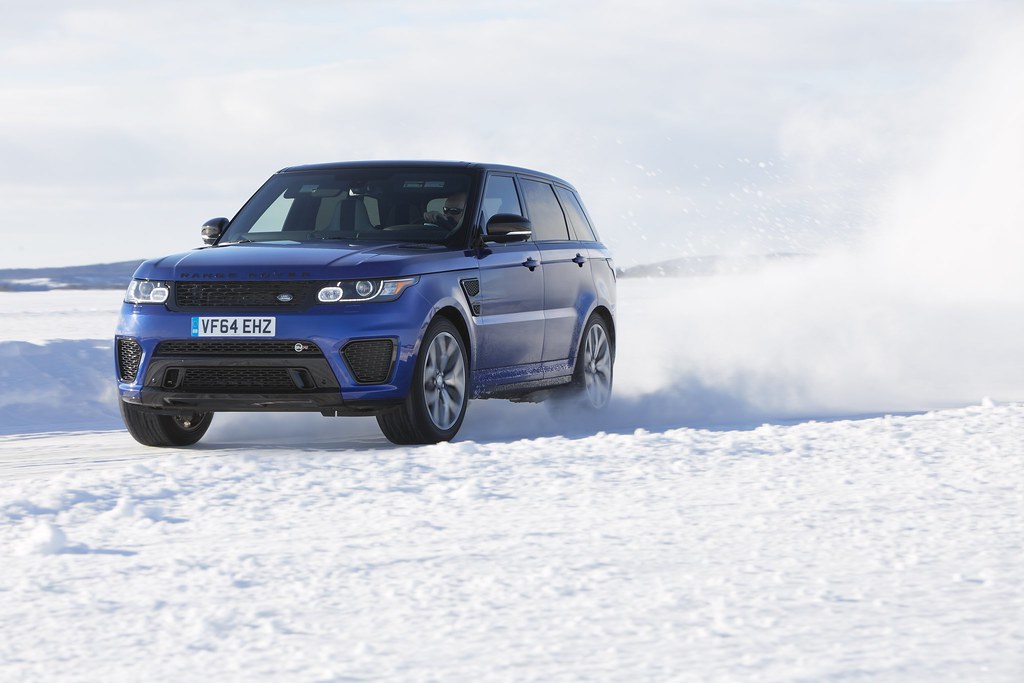
10. **Land Rover Range Rover**The Land Rover Range Rover, the quintessential luxury off-road SUV, secures the tenth spot on our list, with an estimated 10-year maintenance cost of $18,228. Redesigned for 2022, this vehicle remains a symbol of style, comfort, and impressive versatility, lauded for its ability to traverse challenging terrain while providing a ride fit for royalty on paved roads. Its legendary capability and opulent cabin attract a discerning clientele.
However, maintaining this regal presence comes with significant financial demands. Annual maintenance expenses for the Range Rover start at approximately $735 in the first year, escalating to $3,267 by the tenth year. This consistent increase underscores the ongoing financial commitment required to preserve the vehicle’s sophisticated systems and robust off-road capabilities.
The probability of encountering a major repair within a decade is 49.6%, indicating a substantial risk of unforeseen and potentially costly interventions. This figure is a critical consideration for current and prospective owners, suggesting that significant repair events are not uncommon over the vehicle’s lifespan. These costs are often exacerbated by the specialized components and labor unique to Land Rover vehicles.
The high maintenance costs for the Range Rover are driven by its advanced engineering and luxury features. As the context points out, “air suspension failures and glitchy electronics drive repair bills even higher.” These complex systems, coupled with premium materials and specialized parts required for its off-road prowess, mean that even minor repairs can result in jaw-dropping invoices. The vehicle is as demanding in its upkeep as it is stylish and capable.
Consumers considering a Range Rover should not only budget for its substantial purchase price but also for a robust and increasing maintenance fund. Its combination of luxury, advanced technology, and rugged capability translates directly into elevated upkeep expenses. Understanding these long-term financial implications is crucial for any owner aiming to enjoy the full scope of what this iconic luxury SUV has to offer without financial strain.
Car Model Information: 2017 Mazda Mazda3 Sport
Logo: Range Rover logo.svg
Caption: 2022 Range Rover SE P440e (L460, fifth generation, United Kingdom)
Aka: Range Rover Vogue (1981–2022),Range Rover Autobiography (1994–present)
Name: Range Rover
Manufacturer: ubl
Production: 1969–present
Assembly: Solihull
Class: Mid-size luxury car,SUV
Layout: Front-engine, four-wheel-drive layout
Sp: uk
Categories: 1980s cars, 1990s cars, 2000s cars, 2010s cars, 2020s cars
Summary: The Land Rover Range Rover, generally shortened to Range Rover, is a 4WD luxury mid to full size crossover marque and sub-brand of Jaguar Land Rover, owned by India-based Tata Motors. The Range Rover line was launched in 1970 by British Leyland and since 2022 is in its fifth generation.
Additional models have been launched under the Range Rover name, including the Range Rover Sport, Range Rover Evoque, and Range Rover Velar.
Get more information about: Range Rover
Buying a high-performing used car >>>
Brand: Land Rover Model: Range Rover
Price: $13,857 Mileage: 76,933 mi.
Read more about: Joan Mellen: A Life of Unflinching Inquiry and Intellectual Combat Remembered at 83
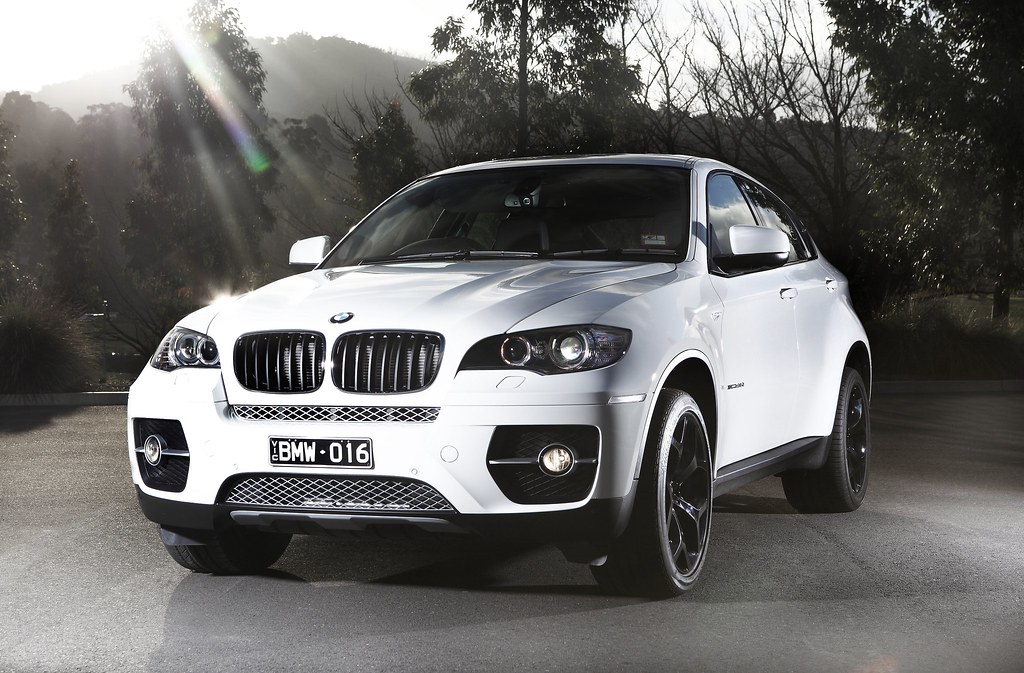
11. **BMW X6**The BMW X6, a distinct coupe-like alternative to the X5 SUV, ranks eleventh on our list of high-maintenance vehicles, carrying an estimated 10-year maintenance cost of $18,148. It differentiates itself with a sharply raked roofline, a design choice that prioritizes a sportier aesthetic, offering a dynamic driving experience. While it sacrifices a bit of rear headroom and cargo space compared to the more traditional X5, its unique styling has a strong appeal.
From a financial perspective, owners can expect annual maintenance costs to begin around $618 in the first year, gradually increasing to approximately $3,404 by the tenth year of ownership. This escalating cost trajectory is a common characteristic among luxury performance vehicles, reflecting the specialized care and premium components needed to maintain their sophisticated engineering and performance standards as they age.
The likelihood of needing a major repair for the BMW X6 within the first decade is 54.6%. This figure is consistent with other premium European vehicles on this list, signaling a significant risk for unexpected and potentially expensive repair events. The X6, though less intensely performance-oriented than its M variant, still incorporates advanced technology and robust mechanical systems that contribute to higher servicing costs.
The elevated upkeep expenses for the BMW X6 are directly linked to its luxury status and complex design. Its powerful engines, sophisticated suspension, and intricate electronic systems all demand specialized BMW parts and highly skilled technicians. Any issue with these advanced components can quickly translate into significant repair bills, reflecting the precision engineering inherent in the brand.
For consumers drawn to the X6’s distinctive sporty styling and engaging driving dynamics, it is essential to factor these considerable ongoing maintenance costs into their long-term financial planning. The blend of luxury and performance, while exhilarating, requires a consistent and substantial investment to ensure reliability and preserve the vehicle’s sophisticated functionality throughout its ownership life.
Car Model Information: 2017 BMW X6 M Base
Name: BMW X6
Caption: BMW X6 (F16)
Manufacturer: BMW
Production: December 2007 – present
ModelYears: 2008–present
Class: Executive car,crossover SUV
BodyStyle: coupé SUV
Layout: Front-engine, four-wheel-drive
Related: BMW X5
Categories: 2000s cars, 2010s cars, 2020s cars, All-wheel-drive vehicles, All articles with dead external links
Summary: The BMW X6 is a mid-size luxury crossover SUV by German automaker BMW. The BMW X6 is the originator of the sports activity coupé (SAC), referencing its sloping rear roof design. It combines the attributes of an SUV (high ground clearance, all-wheel drive and all-weather ability, large wheels and tires) with the stance of a coupé (styling featuring a sloping roof). It is built in BMW’s North American plant in Greer, South Carolina alongside the BMW X5, whose platform it shares. Prior to the release of the X7, the X6 was considered a flagship SUV for BMW.
The first generation (E71) was released for sale in April 2008 for the 2008 model year, while the second-generation X6 (F16) was launched at the Paris Motor Show in 2014. The third-generation X6 was revealed in July 2019.
Get more information about: BMW X6
Buying a high-performing used car >>>
Brand: BMW Model: X6
Price: $28,444 Mileage: 87,654 mi.
Read more about: Beyond the Badges: 10 Revolutionary 1960s Sports Cars Only True Collectors Will Recognize
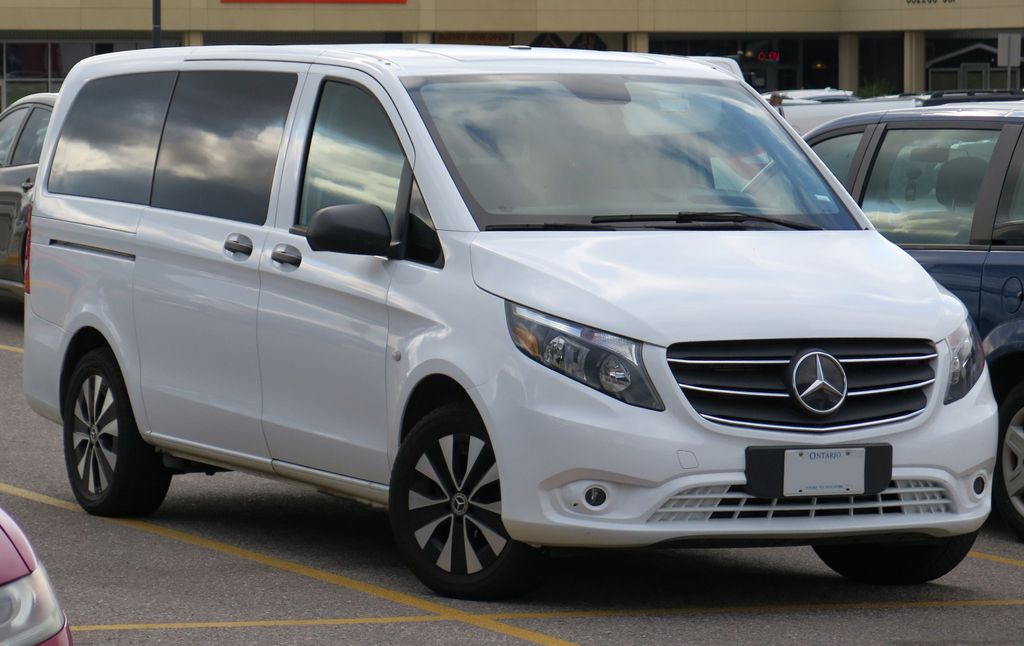
12. **Mercedes-Benz Metris Van**The Mercedes-Benz Metris Van, a smaller yet versatile stablemate to the Sprinter, finds itself in the twelfth position on our list, with an estimated 10-year maintenance cost of $18,045. Designed for both commercial and passenger use, the Metris offers practicality and adaptability, often serving as a compact yet capable work vehicle. However, like its larger sibling, its premium branding translates into significant long-term upkeep expenses.
An analysis of the annual maintenance costs for the Metris reveals a steady increase over its operational life. Owners can anticipate spending around $582 in the initial year, with this figure rising to approximately $3,454 by the tenth year. This upward trend is indicative of the continuous investment required to maintain a commercial-grade vehicle, especially one with premium origins, under various usage scenarios.
The probability of requiring a major repair for the Mercedes-Benz Metris Van within ten years is 56.7%. This statistic, identical to that of the larger Sprinter, highlights a considerable risk for unexpected and potentially costly repairs. For businesses relying on these vans, such downtime and associated expenses can directly impact operations and profitability, making these costs a critical financial consideration.
The high maintenance and repair costs for the Metris are largely due to its Mercedes-Benz heritage. Even in a commercial application, components typically carry a higher price point than those from non-premium brands. The specialized engineering required for its powertrain, chassis, and advanced safety features contributes to more expensive parts and labor for servicing, ensuring the vehicle meets Mercedes-Benz standards of reliability and performance.
Prospective buyers, especially small business owners, should carefully budget for these substantial and increasing maintenance outlays. While the Metris offers a compelling blend of versatility and brand prestige, its sophisticated design necessitates an ongoing financial commitment that reflects its premium standing, ensuring it remains a reliable asset for the long haul.
Car Model Information: 2017 Mazda Mazda3 Sport
Name: Mercedes-Benz V-Class
Aka: Mercedes-Benz Vito (Van),Mercedes-Benz Viano (MPV),Mercedes-Benz V-Class (MPV),Mercedes-Benz Marco Polo (Campervan),Mercedes-Benz Metris (North American Models),Mercedes-Benz EQV (electric),Mercedes-Benz eVito Tourer (electric)
Manufacturer: ubl
Production: 1995–present
Predecessor: Mercedes-Benz MB100
Class: Light commercial vehicle
BodyStyle: ubl
Categories: 1990s cars, 2000s cars, 2010s cars, 2020s cars, ANCAP business and family vans
Summary: The Mercedes-Benz Vito is a mid-sized light commercial vehicle (LCV) produced by Mercedes-Benz, available as a panel van, chassis cab, or multi-purpose vehicle (MPV), carrying cargo or up to eight passengers. In the Mercedes-Benz van lineup, it is positioned between the larger Sprinter and the smaller Citan.
The Vito refers to the cargo van variant for commercial use; when passenger accommodations are substituted for part or all of the load area, it is known as the Vito Traveliner, V-Class or Viano. The Traveliner/V-Class/Viano is a large MPV.
The first generation went on sale in 1996. The second generation was introduced in 2004, and the vehicle received the new Viano name. In 2010, the vehicle was facelifted with revised front and rear bumpers and lights. The interior was also improved with upgraded materials and new technology. The third generation was launched in 2014 and returned to being called V-Class.
The Vito/Viano is available in both rear- and four-wheel-drive configurations and comes in three lengths, two wheelbases and a choice of four petrol and diesel engines (as well as two specialist tuned models) coupled to either a six-speed manual or five-speed TouchShift automatic transmission.
Get more information about: Mercedes-Benz Vito
Buying a high-performing used car >>>
Brand: Mercedes-Benz Model: Metris Van
Price: $13,857 Mileage: 76,933 mi.
Read more about: Mastering the Dark: Driving Pro’s Essential Guide to Enhancing Night Driving Visibility with Easy, Actionable Adjustments for Every Driver
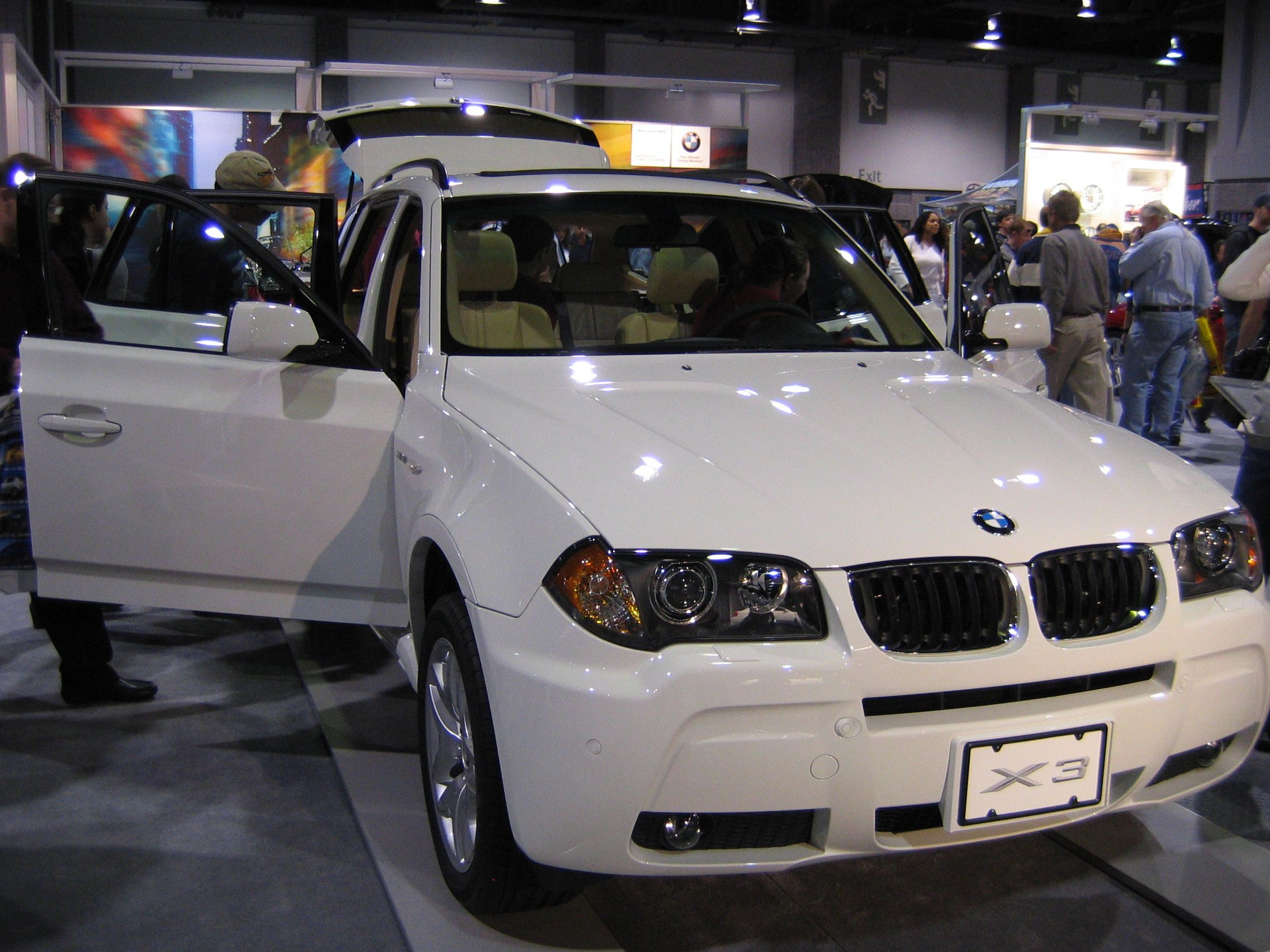
13. **BMW X3**The BMW X3, a compact luxury SUV, ranks thirteenth on our analysis of high-maintenance vehicles, with an estimated 10-year maintenance cost of $17,771. Celebrated for its engaging driving dynamics, which often rival the experience of a 3 Series sedan, the X3 also offers enhanced space and practicality, making it a highly rated choice among luxury crossovers. Its balanced blend of sportiness and utility appeals to a broad range of discerning drivers.
However, this desirable combination comes with a consistent financial demand. Annual maintenance costs for the X3 are projected to begin at approximately $574 in the first year, escalating progressively to $3,361 by the tenth year of ownership. This clear upward trajectory underscores the continuous investment necessary to keep a sophisticated luxury SUV in optimal condition as it accumulates mileage and age.
Owners of the BMW X3 face a 54.6% chance of needing a major repair within the first decade of ownership. This probability is a common thread among premium European vehicles and signifies a notable risk for substantial, unplanned repair bills. The X3’s complex engineering, including its turbocharged engines, advanced suspension systems, and intricate electronic features, requires specialized attention and premium-priced parts for both routine servicing and any necessary interventions.
The high maintenance costs are a direct reflection of BMW’s commitment to performance and luxury. The precision-engineered components and sophisticated technology found within the X3 demand expert care and authentic replacement parts, which contribute to higher labor and material costs. Even what might seem like standard maintenance for a compact SUV becomes a more significant financial undertaking for a vehicle of this caliber.
For consumers attracted to the X3’s blend of performance, practicality, and luxury, understanding these long-term financial implications is crucial. Budgeting effectively for these elevated maintenance expenses ensures that the ownership experience remains enjoyable and financially manageable, preventing the otherwise rewarding driving experience from becoming a source of unexpected fiscal strain.
Car Model Information: 2024 BMW X3 xDrive30i
Name: BMW X3
Manufacturer: BMW
Production: 2003–present
Class: Compact luxury crossover SUV
BodyStyle: SUV
Caption: BMW X3 (G45)
Categories: 2010s cars, All-wheel-drive vehicles, All articles with bare URLs for citations, Articles with bare URLs for citations from July 2025, Articles with short description
Summary: The BMW X3 is a compact luxury crossover SUV manufactured by BMW since 2003, based on the BMW 3 Series platform. BMW markets the car as a Sports Activity Vehicle, the company’s proprietary descriptor for its X-line luxury vehicles.
The first-generation X3 was designed by BMW in conjunction with Magna Steyr of Graz, Austria—who also manufactured all X3s under contract to BMW. BMW manufactured the second-generation X3 at their Spartanburg plant in South Carolina, United States. Starting with the third generation, BMW South Africa’s Rosslyn plant began production of the X3, alongside the Spartanburg plant, after the facility underwent a major upgrade to prepare for the X3 production, replacing the long-running 3 Series production in the plant. About 76,000 units will be manufactured there annually.
The car was the first mid-size, premium SUV on the market. In 2008, BMW started competing with the Mercedes-Benz GLK-Class (renamed GLC-Class since 2016), and numerous other SUVs in this segment. The X3 is smaller than the X5 and X6, and bigger than the X1 and the X2.
The battery electric model is sold as the BMW iX3.
Get more information about: BMW X3
Buying a high-performing used car >>>
Brand: BMW Model: X3
Price: $30,995 Mileage: 43,794 mi.
Read more about: Beyond the Badges: 10 Revolutionary 1960s Sports Cars Only True Collectors Will Recognize
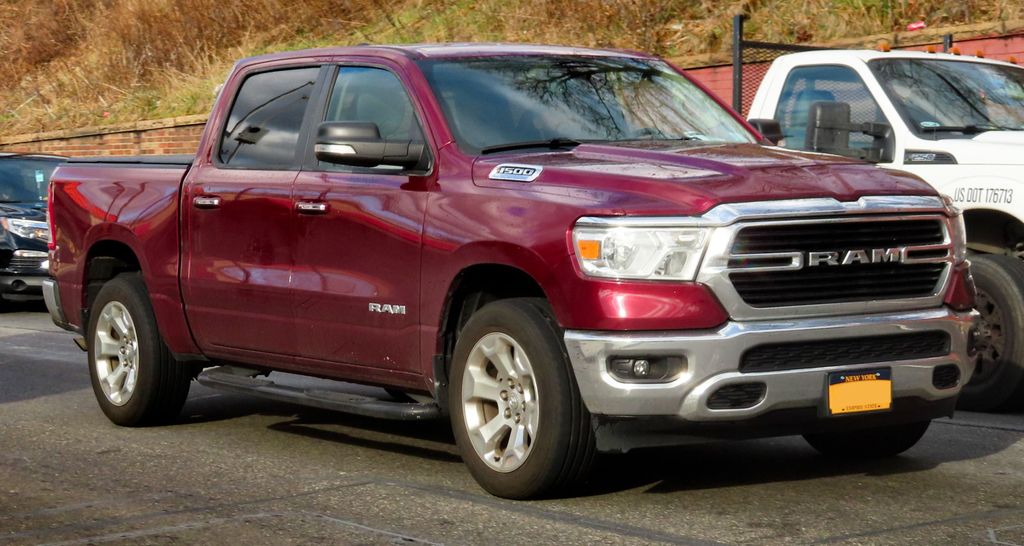
14. **Ram 1500**Rounding out our list of high-maintenance vehicles is the Ram 1500, a full-size pickup truck that boasts an estimated 10-year maintenance cost of $17,677. The Ram 1500 stands out in the competitive truck market for its stylish design, an abundance of features, and the option for truly posh luxury in its higher-end models. It offers a choice of robust V6 and V8 engines, including the formidable 702-horsepower supercharged V8 in the TRX trim, known for its dune-racing prowess.
Despite its widespread appeal, the Ram 1500 demands a considerable ongoing financial commitment for its upkeep. Annual maintenance costs for this pickup truck start at approximately $567 in the first year, steadily climbing to $3,362 by the tenth year of ownership. This escalating trend reflects the inherent demands placed on a full-size truck, which is often subjected to heavier use and more rigorous conditions than a typical passenger vehicle.
The likelihood of needing a major repair within a decade for the Ram 1500 is 54.8%. This statistic indicates a significant risk for unexpected and potentially costly repairs, a crucial factor for both individual owners and businesses who rely on these trucks. Downtime due to maintenance or repairs can be particularly impactful, affecting both personal schedules and operational efficiency.
The underlying reasons for these elevated maintenance costs are multifaceted. While not a luxury vehicle in the traditional sense, its powerful engine options, advanced four-wheel-drive systems, and robust chassis components are engineered for heavy-duty applications. These elements require durable, often more expensive, parts and specialized servicing to ensure reliability and maintain its impressive performance and towing capabilities.
Consumers drawn to the Ram 1500’s blend of style, capability, and luxury features should be well-prepared for these long-term financial implications. Budgeting for substantial and increasing maintenance outlays is essential to keep this popular and versatile pickup truck running efficiently. Proactive maintenance and a clear understanding of potential future expenses are key to a satisfying and sustainable ownership experience.
### The Road Ahead: Navigating Your Vehicle’s Long-Term Costs
As we’ve explored these high-maintenance vehicles, a clear pattern emerges: the allure of luxury, high performance, or heavy-duty capability often comes hand-in-hand with a significant financial commitment extending far beyond the initial purchase price. From precision-engineered sports cars to opulent SUVs and robust commercial vans, the sophisticated systems, premium components, and specialized labor required for their upkeep collectively contribute to elevated long-term costs. The data from CarEdge serves as a crucial reminder that an informed decision involves looking beyond the showroom appeal to the real-world expenses of ownership.
Read more about: Beyond the Badges: 10 Revolutionary 1960s Sports Cars Only True Collectors Will Recognize
For any consumer, whether eyeing a powerful workhorse or a sleek performance machine, understanding these maintenance realities is paramount. It’s not about shying away from your dream car, but about approaching the purchase with eyes wide open and a budget well-prepared. Proactive financial planning, including setting aside funds for anticipated (and unanticipated) repairs, is the cornerstone of a stress-free ownership experience. Ultimately, a vehicle that may seem like a bargain on the used market could become a persistent drain on your finances if its hidden upkeep demands are underestimated. Arm yourself with knowledge, and you’ll not only choose a car that fits your needs but also one that truly fits your long-term budget, ensuring many miles of confident, trouble-free driving.


